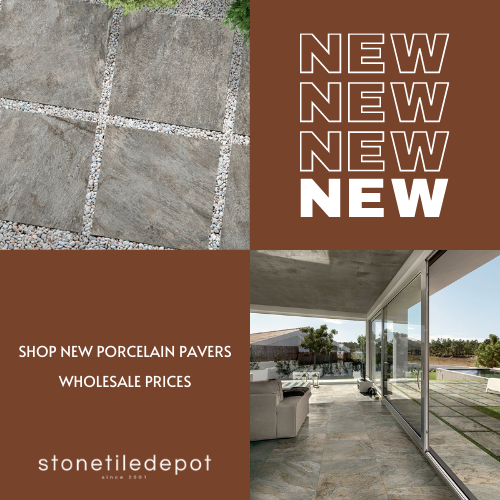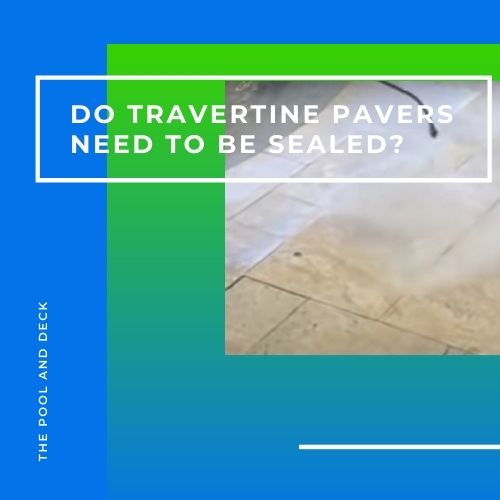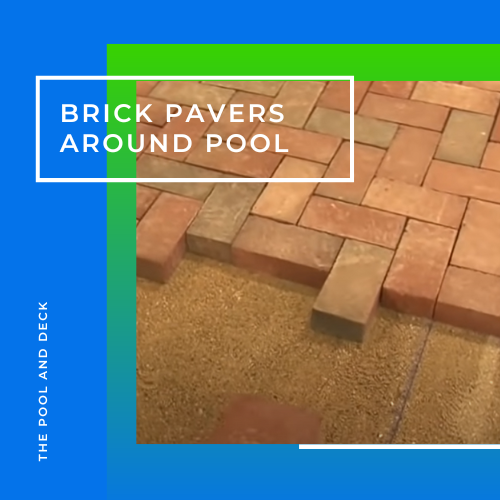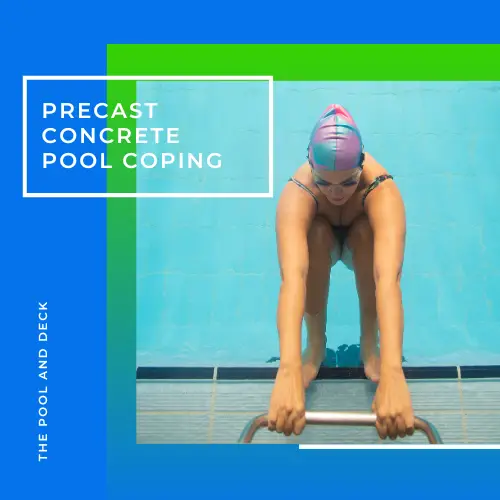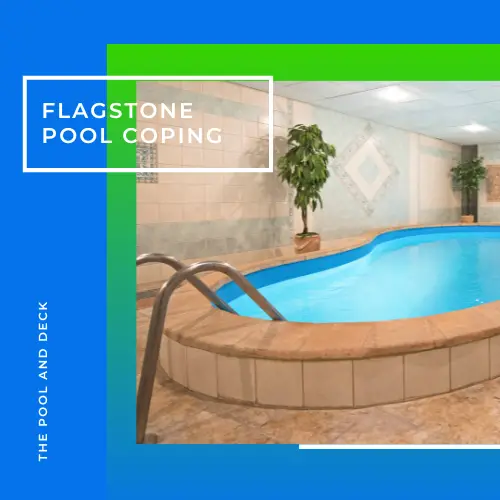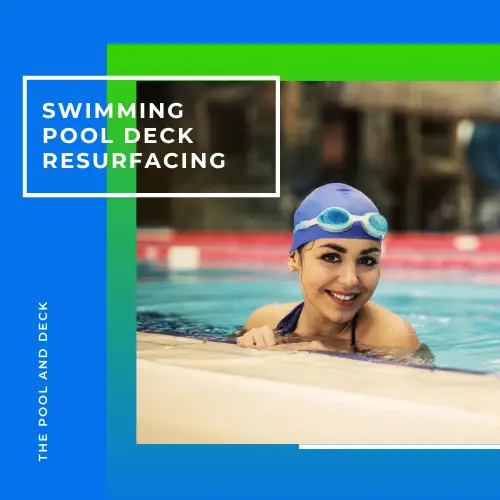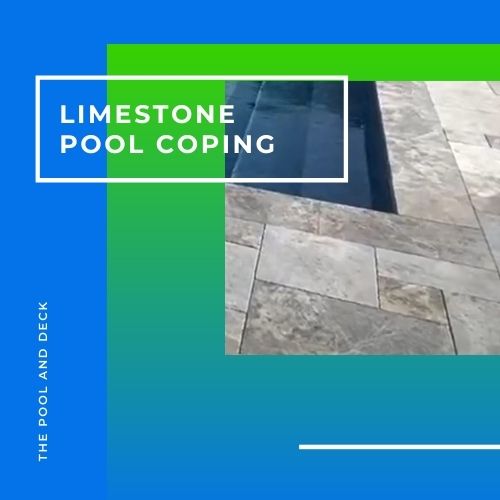Marble Pool Coping: Reasons Why It Is Not The Best Choice!
As an Amazon Associate, I earn from qualifying purchases.
Table of Contents
Is Marble Good for Pool Coping?
Without doubt, marble is one of the most exquisite natural stones. Polished marble is translucent and has a magical glow. Marble is often used for kitchen countertops, living room floors and pool decks. Pool coping should of course have visual appeal. But it needs to be functional too! So, is marble good for pool coping?
Marble pool coping, in spite of its stunning looks, is not value for money. Marble gets hot in the sun and can be slippery, when wet. Marble pool coping is neither comfortable nor safe.
Most of the natural stones used in the building industry come from one of the following 3 types of rocks:
- Sedimentary rocks such as limestone, sandstone and travertine
- Metamorphic rocks such as marble, slate and quartzite
- Igneous rocks such as granite and basalt
Marble is mostly composed of calcite, just like travertine and limestone. In fact, marble started off as limestone that got buried deep into the earth and metamorphosed under severe heat & pressure.
The texture of marble is granular. In contrast sedimentary stones like limestone & travertine have layered or banded textures. Marble is less porous and more water resistant than limestone and travertine. But it is porous enough to get stained easily.
The specific heat capacity of marble is much lower than that of limestone and travertine. As a result, marble pool coping will get hot in the sun.
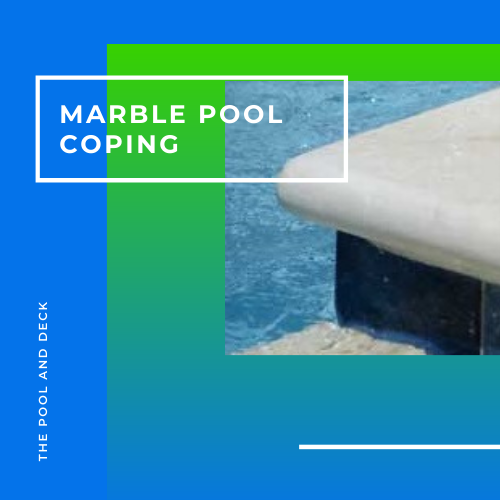
In this post I will explain the functions a pool coping serves. Pool copings have different types of edges and a variety of materials can be used. I will examine how marble pool coping fares on my scoring system based on six important pool coping parameters. So read on.
Why Do Pools Need Coping?
It is not essential to have pool coping. Some pools, such as infinity pools, do not have pool coping. But a vast majority of residential pools do have coping.
Coping is the horizontal cap on the vertical pool shell wall. Coping can be concrete, cast on site or precast. It can also be made from slabs or tiles of natural stone such as granite or travertine.
Coping is the pool frame and separates the pool structure from the pool deck. It also protects the top edge of the pool shell. Pool coping sits on the pool shell’s bond beam.
Pool coping serves six important functions:
- De-link the pool deck from the pool structure
- Protect the pool bond beam from water ingress
- Direct water splashing to pool drains
- Helpful grip for swimmers
- Non-slip walking surface around the pool
- Add a visual transition from water to deck
Marble pavers can be a good choice for pool decks, particularly if the area will be under shade and not likely to get wet. It can make a very luxurious flooring under a pergola or a covered patio.
Marble pavers for pool coping can be quite expensive due to the thickness. In spite of the high cost they are not comfortable, safe or protective. In my opinion, marble pool coping is not worth it!
What Are the Different Types of Pool Coping?
There are 3 basic types of pool coping styles you could choose from. Each has its pros & cons.
1. Drop Edge:
In the Drop Edge type pool coping the stone paver is L-shaped. The vertical edge is short and drops towards the pool. The corner is sharp.
Drop Edge style gives a very modern look to a rectangular pool.
2. Cantilevered:
In the Cantilevered type pool coping the edge overhangs on the pool and has a slightly curved corner. Cantilevered pool coping allows the deck surface to blend seamlessly with the pool’s edge.
Cantilevered style is safer, as straight edges of Drop Edge style are sharp and can result in cuts & bruises.
3. Bullnose:
The Bullnose pool coping forms a rounded edge at the lip of the coping. The profile of a half bullnose is a quarter circle on top while the profile of a full bullnose would be a semi-circle. Bullnose pool copings are very helpful when swimmers want to grip the edge and pull themselves out of the pool.
Bullnose style is perfect for natural stone pavers like marble. A white marble pool coping with a bullnose edge looks great on kidney shaped or curved pool perimeters.
What Can Be Used for Pool Coping?
Any material that is suitable as pool decking would be, generally speaking, suitable for pool coping. However, pool coping materials need to be carefully chosen to meet following requirements:
- Low water permeability to protect the pool structure
- High comfort & safety levels to accommodate higher foot traffic
Four pool coping materials are commonly used:
Concrete
Concrete, poured in situ, or concrete pavers work wonderfully if your pool deck is made from a concrete slab on grade. This by far is the most economical option. However, you do not need to sacrifice style or functionality.
Brushed concrete pool coping complements a stamped concrete pool deck perfectly. The brushed concrete coping will be slip resistant while the stamped concrete deck can have a unique personalized look.
Natural Stone
Travertine, Limestone, Marble and Granite are some of the several natural stone pavers you could choose from. Travertine is by far the most popular. Travertine is not slippery, even when wet, does not get hot in the sun and is not too expensive.
Brick
Brick pavers are useful as pool coping material as they can withstand chlorinated water. They are not only cheap but also easy to replace. However, bricks are quite porous and not very durable.
Wood Composites
Wood composites are excellent as they are engineered products. Composites can incorporate all the properties required by pool coping, such as slip resistance, not getting hot in the sun, and being impervious to water & pool chemicals.
They are very affordable but do lack the touch of class. Your pool will be just another “cookie cutter” pool.
Conclusion: Marble Pool Coping Is Not Value For Money
To judge the suitability of a natural stone for pool coping, I evaluate them on 6 important requirements. The stone is given a score on a 5 point scale on each parameter and an average taken.
The average score for a marble pool coping is 2.67. This is the lowest score, when compared to granite, limestone and travertine.
See Table and explanations below:
| Property | Score |
| Low Porosity | 4 |
| Slip Resistance | 2 |
| Gets Less Hot | 1 |
| Hardness | 3 |
| Looks | 5 |
| Affordability | 1 |
| AVERAGE | 2.67 |
A marble coping gets the lowest score among commonly used natural stone coping. Travertine on the other hand gets the highest score when it comes to suitability for pool coping.
Low Porosity
Rocks.CompareNature describes marble as being “less porous”. Limestone and granite are also described as “less porous”. In fact marble is a bit more porous than granite, but less porous than limestone. Travertine is the most porous of the lot.
The low porosity of marble is useful for pool coping. Pool water, along with pool chemicals, can not penetrate the pool coping. This prolongs life span of the coping and also prevents damage to the pool bond beam.
Slip Resistance
The slip resistance of a pool coping, when wet, is influenced by both porosity and texture. High porosity reduces slips caused by “hydroplaning”. High texture profile increases the grip and traction.
Sandblasted, flamed or tumbled finish marble pool coping will increase grip and traction.
Gets Less Hot
The specific heat capacity of some common natural stones used for pool coping is given in the table below:
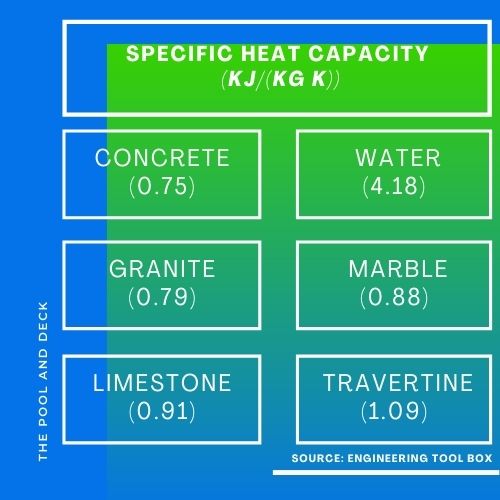
Data Source: Engineering Tool Box
Concrete & Water Specific Heat Capacity is mentioned so that you can put the paving materials in perspective.
The “specific heat capacity” of marble is higher than granite but much lower than limestone and travertine. Generally speaking, lower the Specific Heat Capacity of a material, higher will be the rise in temperature, under the same sunlight conditions.
Hardness
The hardness of marble, limestone and travertine are in the 3-4 range of Mohs scale. So marble is not much different in hardness. Granite, however, is the hardest being 6-7 on Mohs scale. (Source: Rocks.CompareNature ).
Looks
Marble, is without doubt, the most beautiful and luxurious looking natural stone. Marble pavers or tiles on your pool deck will certainly increase the value of your home.
However, in my opinion, it is better to use black granite pool coping with a white marble pool deck. Your pool will have a “picture frame” look. The combination brings out the best qualities of granite and marble.
Affordability
Marble is the most expensive pool coping you can buy. The price is purely a reflection of the beauty of marble. But, I think the money is wasted on pool coping.
Use marble for pool deck and granite for pool coping for the ultra luxurious look!
Thank you very much for reading the post. I do hope you found it informative and helpful.

